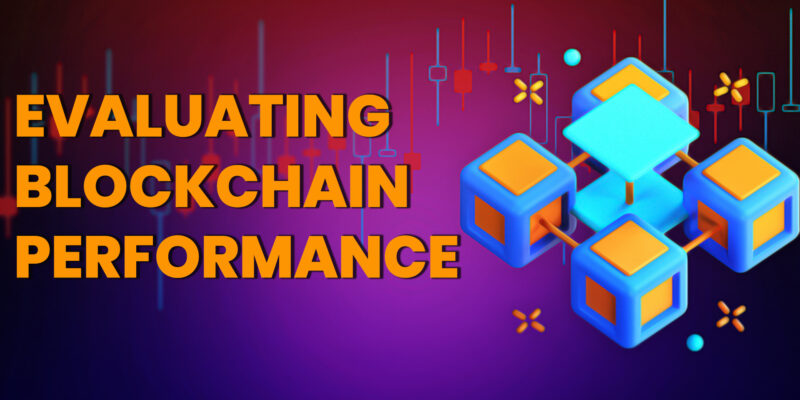- The essay delves further than Transactions Per Second (TPS) to analyze the key components that determine a blockchain’s effectiveness, security, and scalability.
- It also shows cutting-edge products like SKALE that are redefining performance measurements and opening up new possibilities for blockchain scaling, altering the blockchain environment.
The competition to attain the greatest Transactions Per Second (TPS) has become a recurring theme in the constantly changing world of blockchain, technology. Despite making big promises of reaching 160,000 TPS, blockchains like Aptos only managed to hit a peak of 2,107 TPS, demonstrating that TPS alone does not accurately represent a blockchain’s performance. This article will investigate the complex realm of blockchain performance in further detail, moving beyond TPS to examine the core elements and crucial metrics that matter.
Exploring A Blockchain’s Core Components: A Blockchain’s Anatomy
The trustless transactions made possible by blockchain technology are known for doing away with the necessity for middlemen like banks and governments. A blockchain functions as a series of blocks, each of which contains validated transactions. Its decentralized character, which is upheld by a network of nodes cooperating to validate and safeguard transactions, is what sets it apart. Let’s first examine blockchain’s underlying ideas to fully comprehend its performance:
- Decentralization
A blockchain works as a peer-to-peer network without the control of a central authority, improving security and transparency.
- Immutability
A transaction becomes unchangeable once it is included in a block and later added to the blockchain, resulting in an immutable record that everyone can access and check.
- Cryptography
Cryptographic techniques guarantee transaction validity by ensuring system integrity, transaction authentication, and data secrecy.
- Consensus
To provide trust and transparency, consensus methods rely on a network of participants to validate and approve transactions.
- Smart Contracts
Programmable contracts that take effect when certain criteria are satisfied change a variety of agreements and transactions.
The Process Of A Blockchain Transaction In Detail
A blockchain transaction goes through various stages in its lifecycle:
- Transaction Initiation: Users sign documents using a digital signature to confirm their identity and transaction information.
- The transaction is broadcast to network nodes for verification before being added to a pool of pending transactions.
- Nodes compete to validate the transaction by examining the sender’s funds, digital signatures, and adherence to consensus norms.
- New Block Creation: After a transaction has been validated, a node generates a new block that includes the transaction, a timestamp, a special hash, and a reference to the preceding block.
- Block verification: To ensure that all transactions are genuine, the new block is broadcast for review by network nodes.
- Block Addition to the Blockchain: The block is added to the blockchain after verification, producing an immutable transaction record.
- The number of confirmations required varies per network, but the transaction is deemed confirmed once it is added to the blockchain.
The Performance Of Blockchains And Consensus Mechanisms
Blockchain performance is heavily impacted by the consensus mechanism selected. Typical mechanisms comprise:
- Bitcoin’s Proof-of-Work (PoW) system needs nodes to solve cryptographic problems to contribute blocks. It is energy- and computationally intensive yet secure.
- Nodes are selected for proof-of-stake (PoS) networks depending on their Bitcoin holdings. PoS can be less decentralized yet be energy-efficient.
- Delegated Proof-of-Stake (DPoS): Transactions are validated by a small number of nodes, increasing speed but posing a centralization risk.
- Proof-of-Authority (PoA): Reliable transactions are validated by trusted nodes over decentralization.
- Proof-of-Elapsed Time (PoET) is a private blockchain technology that emphasizes energy efficiency by having nodes compete based on unpredictable wait periods.
Blockchains: Monolithic Vs. Modular
Architecture is a vital factor. While modular blockchains separate functions into layers for greater scalability and flexibility, monolithic blockchains handle all functions simultaneously.
Balancing Decentralization, Security And Scalability In The Blockchain
The performance of blockchains is dependent on three elements: decentralization, security, and scalability. It can be difficult to strike a balance between these aspects since advances in one area may have negative effects on others.
Key Benchmarks For Blockchain Performance
Key measures outside of TPS include:
- Time-to-Finality (TTF)
The amount of time needed for a transaction to be verified and put into the blockchain has an impact on dependability.
- Block Size
TPS and TTF are impacted by the block size’s maximum. Larger blocks may speed up TPS but slow down validation.
Scaling Up Innovation Outside Of TPS
More effort is needed to improve blockchain performance than simply increasing TPS. Solutions comprise:
- Sharding
Creating smaller, more manageable shards of the blockchain to increase scalability
- Layer 2 Solutions
Based on already-existing blockchains, these solutions lighten the burden by utilizing off-chain transactions like optimistic rollups and Zero-Knowledge rollups.
- State Channels
These enable quick, inexpensive transactions for high-frequency transactions by generating transient off-chain states.
- Sidechains
Sidechains provide flexibility and customization. They operate independently of the main chain yet are connected to it.
These alternatives will coexist as blockchain technology develops, each catering to distinct use cases and attempting to strike a balance between decentralization, security, and scalability.
SKALE: A Special Performance Approach
Scaling Ethereum is approached differently by SKALE. While enhancing speed, it provides a multichain network of interconnected blockchains that inherit Ethereum’s security. Smart contract creation is made simple by SKALE’s native Ethereum chains, which also give customers a gas-free experience. With strong TPS and TTF scores, SKALE surpassed its rivals in real-world tests.
Conclusion
The blockchain trilemma, consensus processes, and architecture are all part of the blockchain’s performance, which goes beyond TPS. The blockchain landscape is being redefined by cutting-edge technologies like SKALE as Ethereum scales to address its scalability challenges. The journey toward improving blockchain performance is continuing, and the future will be characterized by innovation and cooperation among diverse scaling solutions.


Comments